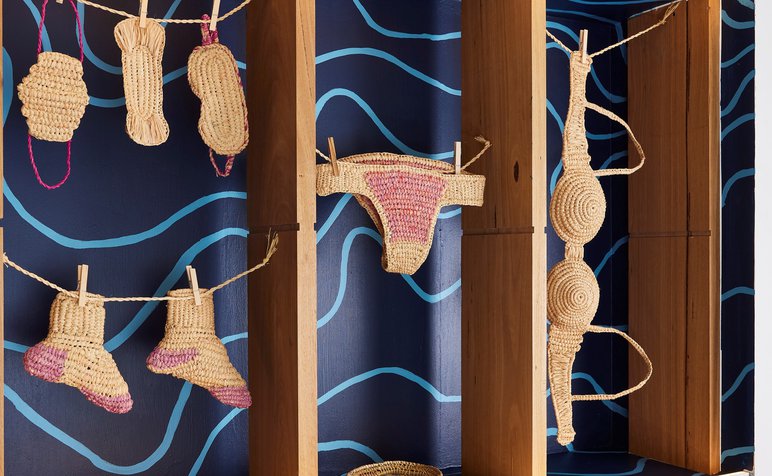
Craft Conversations
Emma Shepherd is a weaver based on the Mornington Peninsula. Her process-driven pieces explore structure and texture, and are guided by an intuitive response to material. Emma creates work that sits at the intersection of art, craft and design, creating both functional and abstract pieces. Emma has new works on display in Equilibrium, now showing in the Members Vitrine Gallery. Alongside the exhibition, we spoke with Emma about her introduction to weaving and her sheer love for the process.
When did you start practising weaving and did you like it immediately?
I was introduced to weaving in 2016, when I studied Textile Design at RMIT. As soon as I started, I loved it. We had the choice then of specialising in printing, knitting or weaving, but there was never a question of what I wanted to do. Despite the non-existent job market in weaving, I am so thankful I chose it, as it is such a fulfilling, wonderful practice.
Can you describe your weaving process?
I often start with selecting some yarns that are inspiring, that speak to each other and form a mini collection. I then go through my books and pick a draft which will form the patterns. After this I start the many steps that happen prior to the actual weaving, like winding the warp, dressing the loom, threading everything up, before I start actually weaving. Depending on the day, and how labour-intensive the weaving is, I may weave for hours at a time, or in short bursts.
What drew you to weaving?
The yarns were what really drew me to weave, they are so inherently beautiful and it is an honour to use them in my work. I think the slowness of the process, and the methodical nature of weaving means that it has become like an active meditation to me.
Where do you find your inspiration?
I have a really lovely collection of books, technical ones with drafts and patterns, and books about artists which I am always flicking through. It is a different experience from viewing things online and a worthy investment for me. I also live around the corner from a lot of national parks which I go bushwalking through. I think these earthy tones and textures are reflected in my work.
Thinking about the conceptual aspect of your work, does this come to you before, during or after your work is completed?
I take a really practical approach to my work, I enjoy the making part of the process and it is often driven by design considerations like colour, texture, shape. The art side of the practice is quite intuitive and mostly guided by the materials I have collected and how I want to show them.
Do you think you’ll always weave or will you go on to experiment with other crafts later in your career?
I hope I will always be weaving - that's my plan anyway. I have done some ceramics and printmaking, and I love these processes, but I always come back to weave. Weave for me exists in a somewhat complicated but rewarding space at the moment, where it is a partial business, which comes along with all of those tribulations, but is also the thing I love most in the world (apart from family and friends and red wine). I engage in other creative pursuits as a way to switch off and make for no purpose, which is a joy, but weaving is where my heart is.
Do you consider your studio a place of work or a place of pleasure?
A bit of both! The studio sits about 5 metres away from the house where I live, which is on a farm, so there's rarely a day where I'm not in here. And most of the time I love that, even if I'm just pottering about and cleaning up, but I try to stop working when I feel like it's a strain on my body and mind. That's a pretty quick way to burnout. I am so very lucky to be working here though, it's an awesome space that my grandpa has custom built for me, filled with the work of craftspeople I admire, and six beautiful looms!
Interview by Dulcie on work experience placement with Craft.

